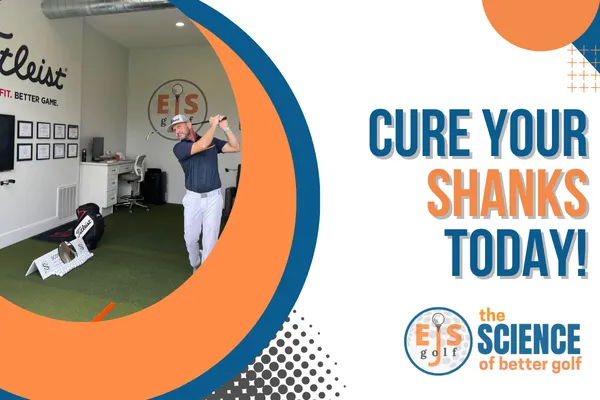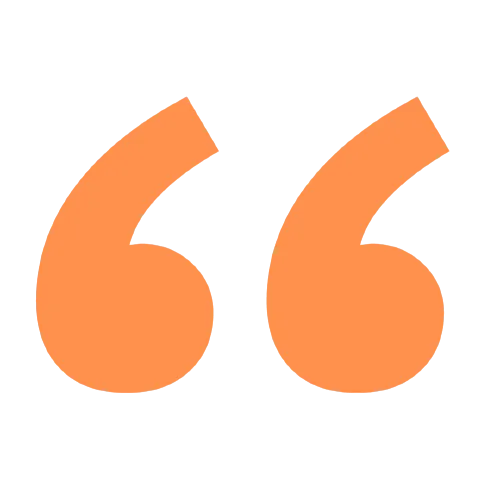EJS GOLF BLOG
Learn about the golf swing and what you can do to improve your score on the golf course. Fill out the form below if you have any questions or want to set up a time to talk.
Mastering the Art of Golf with Coach Erik Schjolberg
I’m Coach Erik Schjolberg, and welcome to the EJS Golf blog—Scottsdale’s authority on science-driven ball-striking. Here you’ll find in-depth analyses of swing mechanics, data-backed breakdowns of impact and launch dynamics, and actionable practice routines designed to rewire your muscle memory from day one. Each post peels back the curtain on cause-and-effect in your swing, whether you’re chasing Tour-level precision, collegiate consistency, or lower weekend scores. Dive into our deep-dive articles, master the drills that drive real improvement, and transform your game with proven science and strategy.
But let’s be clear: golf isn’t only about perfecting swing mechanics. The mental battle you fight on each tee is often the one that determines whether you stay in the game or walk off the course. Here, we’ll tackle the psychological hurdles—the pressure of a tight leaderboard, the frustration when a swing fails under stress, the self-doubt that creeps in after a bad hole. You’ll learn evidence-based mental strategies—visualization routines, pre-shot rituals, stress-management techniques—that fortify your focus and resilience. Mastering these mind-set tools is just as critical as dialing in your impact position, and I’ll show you exactly how to integrate mental training into your practice for lasting confidence on every shot.
Explore Our Blogs

Cure Your Shank Forever: Science-Backed Fixes from Coach Erik
What Causes the Dreadful Shank
Hi friends and golfers. My name is coach Erik Schjolberg, founder and owner of EJS Golf and the Science of Better Golf community. You can find me teaching live at McCormick Ranch golf course located in Scottsdale, AZ. Having coached thousands of lessons over the past 25 years plus, I have learned that the more golfers focus on data and what is real vs. feels or imagined, the better they get.
The shank, clinically defined as impact between the golf ball and the hosel of the club, is one of the most debilitating and psychologically disruptive mis-hits in golf. It is not merely a random error but the deterministic and violent geometric consequence of a specific set of biomechanical, kinematic, and neuromuscular failures. This analysis will deconstruct the shank to its foundational causes, moving beyond simplistic coaching adages to a multi-faceted examination of the swing as a dynamic system. The core thesis is that every shank is the result of the club's center of mass being presented significantly further from the golfer's center of rotation at the moment of impact than was established at address. The critical question, therefore, is why this spatial displacement occurs. This dissertation will explore the primary causal pathways, including failures in the kinematic sequence, postural instability, neuromuscular dysfunction, and the resulting psychological feedback loops that perpetuate the error.
I. The Fundamental Geometric Inevitability
At its core, the shank is a problem of spatial geometry. A standard iron face is approximately 3-4 inches wide. The hosel, the cylindrical component connecting the shaft to the clubhead, is located at the heel of the club. For the ball to make contact with the hosel, the center of the clubface must be, at the moment of impact, approximately 1.5-2 inches further away from the golfer's body than the center of the golf ball.
This is the non-negotiable geometric outcome. All subsequent analysis is dedicated to identifying the mechanisms that produce this outward displacement of the clubhead's delivery path relative to the golfer's setup and intention.
II. Primary Causal Pathway: Failure of the Kinematic Sequence
The golf swing is a proximal-to-distal kinematic chain, a sequence of motion that transfers energy from the largest, slowest body segments (the core and lower body) to the smallest, fastest segment (the clubhead). A breakdown in this sequence is a principal cause of the shank.
A. Upper Body Dominance and the "Over-the-Top" Motion: The ideal downswing is initiated by the lower body (hips and pelvis). This creates a lag, allowing the upper body, arms, and club to "drop" into an inside path. When this sequence is violated and the downswing is initiated by the upper body (shoulders, arms, and hands), a cascade of errors occurs:
Casting: The right shoulder (for a right-handed golfer) moves externally and forward, pushing the club away from the body from the top of the swing.
Steepening of the Shaft Plane: This "casting" motion forces the club shaft onto a steeper, more vertical plane.
Out-to-In Path: To avoid hitting the ground several inches behind the ball, the golfer must reroute the club, resulting in a swing path that travels from outside the target line to inside the target line. This path, by its very nature, brings the hosel into the hitting zone first on a trajectory aimed directly at the ball. The club is moving outward toward the ball before cutting back inward. The shank occurs at the peak of this outward movement.
B. Conservation of Angular Momentum: When the arms and club are "thrown" away from the body in an upper-body-dominant swing, the golfer is increasing the radius of the swing arc. To conserve angular momentum (L = Iω, where I is moment of inertia and ω is angular velocity), as the radius (and thus moment of inertia) increases, the angular velocity must decrease. This feels slow and powerless, prompting the golfer to add more muscular force with the hands and arms, which only serves to push the club further outward, exacerbating the problem.
III. Secondary Causal Pathway: Postural Instability and Center of Mass/Pressure Displacement
The golfer's body is the central fulcrum of the swing. Any instability in this fulcrum will manifest as dramatic variability at the distal end of the system (the clubhead).
A. Early Extension (The "Goat Hump"): This is arguably the most common and potent cause of the modern shank. Early extension is defined as the premature thrusting of the hips and pelvis toward the golf ball during the downswing.
Loss of Tush Line: At address, the golfer establishes a certain amount of spine angle and hip hinge, creating a space between their posterior and an imaginary vertical line. Early extension occurs when the pelvis moves forward and upward, closing this space.
Elimination of Swing Space: This forward thrust of the lower body eliminates the physical space required for the arms and hands to swing down on the intended path.
Forced Compensation: To avoid a collision between the hands and the body, the central nervous system makes an instantaneous, subconscious correction: it forces the arms and club outward, away from the body, into the only available space. This outward rerouting shoves the hosel directly into the path of the ball. The golfer is not trying to swing outward; their body's postural failure forces them to.
B. Center of Pressure (CoP) Lunge: Advanced analysis using force plates reveals that many shankers exhibit a dramatic shift in their Center of Pressure toward their toes during the downswing.
Setup Flaw: This can begin at address, with too much weight already on the toes, creating an unstable equilibrium.
Dynamic Imbalance: More commonly, a loss of balance in the backswing (e.g., a "sway" away from the target) causes a compensatory lunge forward in the downswing to regain equilibrium. This lunge moves the entire body—and by extension, the entire swing arc—closer to the ball. If the ball's position remains static, the hosel is now aligned for impact.
IV. Neuromuscular and Proprioceptive Factors
The shank can also be a product of faulty signals within the body's control system.
A. Proprioceptive Miscalibration: Proprioception is the body's sense of its position in space. A golfer may feel that their hands are returning to the same position they were at address, when in reality, they are several inches further from the body. This can be caused by fatigue, a change in equipment, or simply a poorly ingrained motor pattern. The golfer's internal GPS is miscalibrated.
B. Faulty Motor Program Engram: A golf swing is a stored motor program (an engram) in the brain. Once a shank occurs, especially if it happens multiple times, the brain can begin to encode this faulty movement. The shank becomes a "bug" in the software, a program that runs automatically under pressure, even when the golfer is consciously trying to prevent it.
V. The Psychological-Cognitive Cascade: The "Shank Cycle"
The shank is unique in its psychological toxicity, which creates a self-perpetuating feedback loop.
Initial Event: The golfer hits an unexpected shank. The sensory feedback (sound, feel) is jarring and negative.
Fear-Avoidance Response: The primary emotion is now fear of repetition. The golfer's objective shifts from "hit a good shot to the target" to "do not shank the ball."
Cognitive "Fix": The golfer attempts to consciously steer the clubhead to avoid the hosel. A common, and catastrophic, "fix" is to try and hit the ball with the toe of the club. To do this, the golfer consciously pushes their hands and the handle away from their body, believing this will move the hosel away from the ball.
Paradoxical Result: This conscious pushing of the hands away from the body is the exact motion that causes the shank in the first place. It increases tension, disrupts the kinematic sequence, and guarantees the hosel is presented to the ball. The attempt to prevent the shank becomes its very cause.
Reinforcement: The resulting shank confirms the golfer's fear, deeply ingraining the faulty "fix" and solidifying the psychological trauma, making the next shank even more likely. This is a classic example of ironic process theory, where the deliberate attempt to suppress a thought or action makes it more likely to occur.
Conclusion: A Synthesis
The shank is not a single error but a systemic failure. It is the final, observable symptom of a breakdown that begins much earlier in the swing, rooted in one or more of the following:
A Sequential Failure: Initiating the downswing with the upper body instead of the lower body.
A Postural Failure: Thrusting the hips toward the ball (early extension) and destroying the space needed for the arms to swing.
A Balance Failure: Lunging forward onto the toes, shifting the entire swing arc closer to the ball.
A Neurological Failure: A miscalibrated sense of body position or a corrupted motor program.
A Psychological Failure: A fear-based feedback loop that paradoxically generates the very error it seeks to avoid.
Therefore, correcting the shank requires a diagnostic approach that identifies the root cause. Treating the symptom (i.e., "try to hit it on the toe") is not only ineffective but often counterproductive. Effective intervention must address the foundational biomechanics: re-establishing posture and balance, re-sequencing the kinematic chain, and only then, breaking the psychological cycle by building confidence in a new, functional movement pattern. The shank is not a mystery; it is a lesson in the unforgiving physics of the golf swing.
Ready for help with your golf swing? Contact me via the links below or just click here on Book Now.
(480) 861-9370
What You Can Expect from Our Blog
1. Expert Insights on Swing Mechanics:
With over 25 years of experience as a PGA Professional Golf Instructor, I delve deep into the nuances of golf swing mechanics. My articles break down complex theories into understandable concepts, focusing on ground reaction forces (GRFs), biomechanics, and efficient energy transfer.
2. Advanced Technological Guidance:
Our academy is equipped with state-of-the-art tools like the Trackman 4 Launch Monitor, 3D Pressure Plates, and Hackmotion, among others. On the blog, I share how to leverage these technologies to gain precise feedback on your swing, helping you make informed adjustments and see measurable improvements.
3. Tailored Practice Routines:
My philosophy is built on the belief that improvement should be evident from the first lesson. I advocate a '15 minutes per day' practice model, designed to fit into your busy schedule while ensuring consistent progress. Each blog post aims to offer practice drills and routines that are easy to implement and effective in refining your skills.
4. Real Success Stories:
Read about the experiences of those who have trained at EJS Golf Academy. These testimonials not only inspire but also illustrate the practical application of our teaching methodologies and the real results achieved.
5. Interactive Learning:
We occasionally feature video tutorials and interactive content that allows you to visually grasp techniques and corrections. This blended approach helps reinforce learning and allows you to engage with the content actively.
How Our Blog Helps Golfers Get Better
Every post is crafted with the intent to educate. We cover everything from basic fundamentals to advanced techniques, ensuring there's something valuable for every skill level. By presenting data and evidence-backed strategies, our blog demystifies the 'why' and 'how' behind effective golf training. This analytical approach empowers you to make smarter decisions about your practice and play. We understand that generic advice does not suit everyone. Our blog posts are designed to help you identify your own needs and adapt our techniques accordingly. Whether it’s adjusting your grip, stance, or swing path, you’ll find personalized tips that resonate with your specific challenges. Beyond just reading, our blog serves as a community hub where you can interact with fellow golfers and share your experiences. This supportive environment encourages learning and improvement through collective wisdom.
Join Us on Your Path to Mastery
Whether you’re looking to refine your swing, understand the biomechanics of your body, or simply get more enjoyment out of the game, our blog at EJS Golf Academy is your go-to resource. Bookmark our page, subscribe to updates, and start transforming your game today.
Remember, at EJS Golf, we don’t just teach golf; we craft master golfers. Let’s begin this journey together. Visit us atEJSGolf.com to learn more about our programs and start your training online or at our Scottsdale location. Let’s make every swing count!
DO YOU HAVE QUESTIONS?
Fill out my contact form and I will respond to you within 24 hours.
phone: 480.861.9370 email: [email protected]

I've taken multiple private lessons with Erik and he's been by far the best swing coach I have ever worked with. He has the ability to dissect your swing and make small changes for big improvements. What I love most about his lessons is they go far beyond the 1 or 2 hours you're with him. He follows up with videos of how you can improve at home and on the range. The value he provides is absolutely worth the cost of his sessions. I would recommend any golfer at any level who truly wants to get better to go see Erik.”
- Reanol H.

Erik is the best! and that is not an exaggeration. There has not been a single lesson where I haven't walked out and felt like a far better golfer than before. What can't be praised enough is the effort and dedication that Eric puts into each of his students, as his approach to fixing and improving my golf swing was specific to me. While teaching, Erik takes the extra time to truly dive into what he is trying to convey rather than just telling you, allowing for a better understanding. Beyond the instruction at the course, Erik sends specific drills to you from an app that allows for slow motion replays, letting you break down everything and work on your game at any time. I genuinely mean it when I say that I would recommend Erik to anyone wanting to improve their golf game, as he is not only a top not instructor but also a top notch person who cares about his students.
- Brennan K.

Erik is flat out a great coach and mentor! I highly recommend him! Working from the ground up, my swing is healthier and smooth! I wanted a coach that shared the same main principles as the late Tony Manzoni and Erik hits the mark! Found Erik by listening to the Golf Smarter podcast by Fred Greene and connected with EJS Golf through the Perfect Motion app. Erik is motivated and incredibly gifted at his craft!
- Bryan B., Indiana, USA


